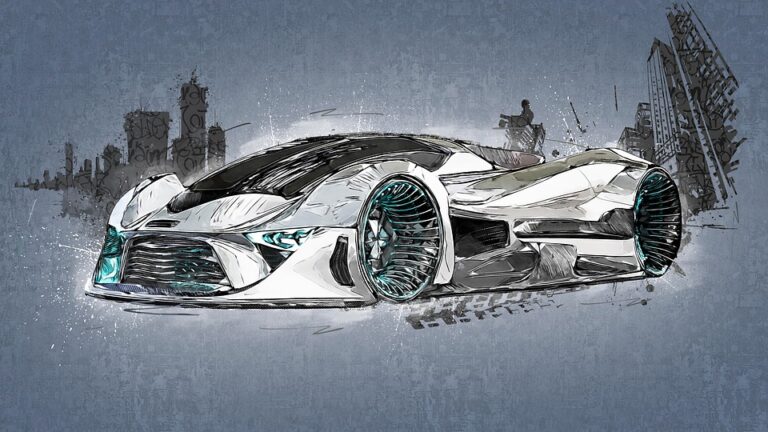Heritage vs. Innovation: Balancing Legacy Design with Modern Techniques
Meta Description: Explore the intricate balance of legacy design and modern automotive innovation in automotive design, showcasing how manufacturers honor tradition while embracing cutting-edge technology.
Introduction
In the rapidly evolving world of automotive design, the tension between heritage and innovation is palpable. As car manufacturers strive to push the boundaries of technology and efficiency, they also face the pressing need to honor their rich histories and brand legacies. This intricate dance between maintaining traditional aesthetics and integrating modern techniques is crucial for attracting both loyal customers and new generations of drivers. This article delves into how the automotive industry balances these competing demands, ensuring that the essence of legacy design is not lost in the pursuit of innovation.
The Importance of Heritage in Automotive Design
Why Legacy Matters
Heritage plays an essential role in the automotive industry, as iconic designs often evoke a sense of nostalgia and brand loyalty among consumers. For example, the classic Mustang silhouette is instantly recognizable and evokes a sense of Americana. Many manufacturers, such as Ford and Volkswagen, capitalize on this by maintaining classic design cues that resonate with long-time fans while appealing to new consumers.
- Brand Recognition: Consumers are drawn to familiar shapes and styles that evoke memories.
- Emotional Connection: Heritage vehicles often bring a sense of identity, making them more desirable.
- Market Differentiation: Leveraging legacy design can set a brand apart in a crowded market.
Modern Techniques in Automotive Design
Embracing Innovation
On the other side of the spectrum, modern technologies are a game-changer in automotive design. Electric vehicles (EVs), autonomous driving capabilities, and advanced materials are just a few examples of how innovation is shaping the future. Integration of cutting-edge technology not only boosts performance but also meets the demands of environmentally-conscious consumers.
- Sustainable Materials: Automakers are increasingly exploring biodegradable and recyclable materials.
- Smart Technology: The incorporation of AI and advanced infotainment systems elevates the driving experience.
- Safety Enhancements: Innovations in design lead to improved crash safety and driver assistance features.
Striking the Right Balance
Combining Heritage with Modernity
The challenge lies in blending these two worlds—maintaining those timeless design elements while also incorporating modern aesthetics and functionalities. To achieve this balance, designers are employing creative strategies that respect their brand’s legacy while embracing change.
Designing with Purpose
Designers can find harmony by:
- Updating Classic Features: Retrofitting classic features with contemporary technology can enhance functionality without sacrificing charm.
- Using Modular Designs: Modular platforms can allow for flexibility in design while maintaining core characteristics.
- Collaboration with Artists: Partnering with contemporary artists and designers can yield fresh interpretations of classic automotive shapes.
Case Studies: Successful Blends of Heritage and Innovation
- Porsche 911: This iconic vehicle has remained true to its heritage, retaining its signature shape while incorporating advanced turbocharged engines and state-of-the-art technology.
- Jeep Wrangler: The Wrangler maintains its rugged, classic look while integrating modern conveniences such as advanced off-road tech and connectivity features.
The Consumer Perspective
What Drivers Want
As consumers evolve, so too do their expectations. Today’s drivers are not just looking for cars; they desire a synthesis of performance, aesthetic appeal, and technological advancements. Consequently, automotive designers and manufacturers must understand this dual demand to capture their target market effectively.
- Preference for Customization: Consumers want vehicles reflecting their personal style, making it vital to offer customizable options.
- Safety as a Priority: With safety technology advancing rapidly, drivers expect comprehensive safety features integrated into their vehicles.
- Environmental Awareness: An increasing percentage of consumers lean towards brands that combine innovation with sustainability.
Conclusion
The automotive industry stands at a crossroads, balancing the undeniable weight of heritage with the accelerating pace of innovation. Successful manufacturers are those that recognize that these two elements do not have to be at odds; instead, they can coexist harmoniously to create vehicles that are both timeless and forward-looking. As the market continues to evolve, those brands that can effectively blend tradition with modernity will not only preserve their legacies but also thrive in a competitive landscape.
In this exciting era of automotive design, staying attuned to consumer desires while respecting the past can help manufacturers navigate the complex relationship between heritage and innovation. By doing so, they can ensure their legacy endures while also paving the way for a sustainable and dynamic automotive future.
For more insights into automotive trends and design innovation, be sure to explore our other articles at Buzzo.Live.


